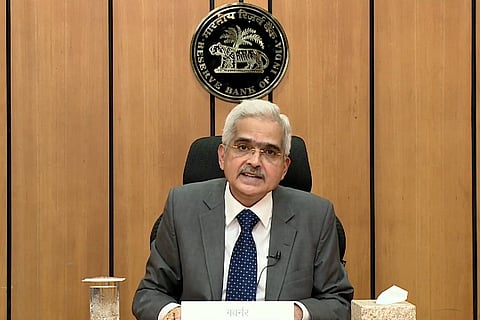

Tamil Nadu Chief Minister Edappadi K Palaniswami wrote to Prime Minister Narendra Modi on Tuesday objecting to the Reserve Bank of India’s recent revised directives on priority sector lending (PSL) where adjustments were made to give more weightage in PSL achievement to districts with comparatively lower flow of credit. He called the new weightage system discriminatory and unacceptable and asked Modi to instruct RBI to reverse its decision and restore the earlier weightage system.
On September 4, the RBI revised priority sector lending guidelines to ensure better credit penetration to sectors and areas that are credit deficient. The idea is for small and marginal farmers, the renewable energy sector, health infrastructure, startups, etc to be able to receive more credit from banking institutions.
Simply put, priority sectors are those sectors that the government and the central bank considers important for the development of the country and hence are given priority over other sectors. When a certain sector, such as agriculture, MSMEs, housing, etc is considered a priority sector, banks are mandated to give a definite portion of their loans to these sectors.
As per the revised guidelines, Indian commercial banks (SBI, HDFC, ICICI, etc), have to ensure that 40% of the loans they give are to these sectors. In the revised norms, the RBI added startups, loans to farmers for installation of solar plants and compressed biogas plants under PSL as well.
As part of the revised guidelines, the RBI also said that it has decided to rank districts on the basis on per capita credit flow to priority sectors in each district and assign weightage to them accordingly. RBI has said that lending institutions will be incentivised to lend to districts with low credit flow, and there would be a dis-incentive framework for districts with comparatively higher flow of priority sector credit.
Per capita PSL or per capital credit flow to priority sectors means how much credit a person or sector under priority gets on an average in each district. It can be calculated by dividing the total credit given to a district with the population of that district.
The RBI has said that districts where the per capita PSL is less than Rs 6,000, will get a higher weightage (of 125%), while districts where the per capital PSL is more than Rs 25,000, will get a lower weightage (90%). Therefore, if a bank gives a loan of Rs 1000 to a district with low credit flow, it will be considered as having given Rs 1250, with additional incentives.
Based on the credit flow, 184 districts have been assigned a higher weightage, while 205 districts have been identified for the lower weightage. There will be no change for the remaining districts.
Balwant Jain, a tax and investment expert, and Chief Editor of Apnapaisa says the idea is that by incentivising lending in districts with lower credit flow, more industries are likely to come and set up shop in these places, thereby increasing employment and developmental activities in those areas.
Eleven districts out of 13 from Andhra Pradesh, 14 out of 30 from Karnataka, 13 out of 14 from Kerala, nine out of 33 from Telangana and all of Tamil Nadu’s 32 districts (prior to bifurcation) have been identified as districts with comparatively high PSL credit flow.
Barring Komram Bheem (Asifabad) in Telangana, no district from the five southern states has featured in the list of districts with lower credit flow, which means that southern states will not receive added incentives from banks to lend to them.
Districts with lower credit flow are largely in states of Bihar, Uttar Pradesh, Chhattisgarh, and northeastern states.
In his letter, the Tamil Nadu CM said that no other state has so many districts covered in the dis-incentive framework and that Tamil Nadu appears to have been singled out for particularly adverse treatment.
Jain adds that TN’s objection mainly stems from the fact that with this weightage system, industries will be less incentivised to come and set up in the state, thus robbing it of potential developmental activity.
CM Edappadi K Palaniswami’s argument is that while attempts should be made to increase credit flow to districts where it is low, “such efforts ought to be by increasing the overall credit flow and not by diverting credit from other districts/states. The overall size of the pie needs to be increased alongside greater financial penetration.”
He added that districts in Tamil Nadu have received a higher flow of credit on account of the enterprise, hard work, diligence and timely repayment of loans by households and businesses in the state. These households and businesses, he says, have been good borrowers, utilising the loans for the intended purpose and servicing the debt on time.
“Hence, this policy of the RBI is unfair and regressive and must be reversed immediately. Hard working, law abiding borrowers who serviced their debt on time, deserve to be encouraged by higher flow of credit. All parts of the country and Tamil Nadu in particular have been affected by COVID-19 pandemic. Uninterrupted flow of credit at this time is critical for revival of economic activity. No such retrograde action, adversely affecting flow of credit, should be taken,” he added.
Requesting the PM to take action in asking RBI to reverse its decision, he said that dis-incentivising good borrowers who repay on time is a short-sighted and counter-productive strategy, for not just the overall economic well-being of the nation, especially when the nation is combating the impact of COVID, but also for the health of the banking system which is struggling with rising non-performing assets.
Jain says that RBI’s move is not permanent and gives districts that are in dire need of credit. “This is valid till 2023-24 and will also be reviewed periodically. If there is a high imbalance in flow of credit post this, the RBI has the provision to correct its course,” he adds.